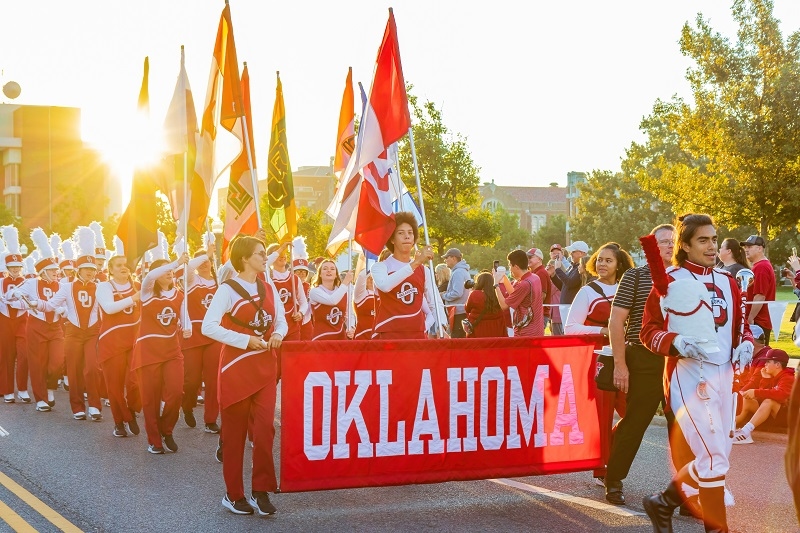
Musical heritage in Oklahoma developed from blended cultural elements with and unyielding dedication toward musical self-expression. The state's local nightclubs in Tulsa and Oklahoma City released blues guitar's soul-stirring music as it established itself as a vibrant musical base for blues and jazz genres.
Traditional jazz with its orchestral spontaneity and blues with its emotional directness express themselves continuously in Oklahoma through musical bands and their dedicated groups of performers and audience members.
Extensive extemporizing elements from both music genres remain powerful motivators for emerging artists who foster the rich heritage of previous musicians. Music exists as more than notes in Oklahoma because it acts as the cultural center of the state that has defined its artistic character since its inception.
During the early part of the twentieth century, African American musicians introduced their rhythmic musical traditions, which formed Oklahoma's unique musical heritage. Traditional jazz, along with blues, emerged from the musical combination of Delta blues and ragtime rhythms.
During the pioneer period, jazz musicians started implementing extemporizing techniques, which resulted in every show becoming a fresh, spontaneous musical journey. The creation of jazz bands throughout Oklahoma developed a distinctive regional music style, while Greenwood District in Tulsa emerged as a leading center for these groups.
Local clubs in Black Wall Street provided performance opportunities to some of the most talented performers during that time period.
Jazz originated in New Orleans, yet Oklahoma directly influenced how it became what it is today. Jazz bands alongside blues musicians thrived in Tulsa as well as Oklahoma City since these cities provided music establishments for artist growth.
Deep Deuce district in Oklahoma City served as a creative base that nurtured the jazz career of blues guitarist Charlie Christian as he developed revolutionary techniques that changed musical history.
The diverse restaurants and nightclubs in Tulsa maintained jazz performances for audiences who wanted to experience spontaneous musical performances directly. Oklahoma's metropolitan areas operated as permanent bases that supported musicians who played with saxophone tenderness or guitar emotional depth.
Throughout the decades, Oklahoma musicians have built on their traditional music base by combining past artistic styles with contemporary developments in their music evolution. The jazz band evolution brought intricate musical frameworks into existence, yet performers preserved live musical spontaneity.
The state's music identity sustained its blues guitar emotional authenticity as its characteristic musical feature throughout earlier decades. The sound of Oklahoma gained strength from Chicago blues and Texas swing influences to develop a vibrant, active musical tradition.
Lowell Fulson and Jimmy Rushing led the way for the next generations to protect the pulsating strength of both blues and jazz music. Modern artists in Oklahoma continue to draw inspiration from music pioneers, which proves that the state's musical scene remains persistently alive.
Local clubs in Oklahoma form the heart and soul of the modern blues and jazz entertainment scene. The Blue Door in Oklahoma City and The Colony in Tulsa serve as historic stages that present musical performances that keep the traditional musical heritage of the state alive.
The clubs function as a valuable stage for musicians of all experience levels to embrace both impromptu music and maintain authentic blues performance energy. The live shows staged in these specific venues bring out genuine feelings and instrumental virtuosity, which truly depict blues, guitar, and traditional jazz.
Stepping into live musical performances in Oklahoma networks feelings between audience members through both dedicated solos and band jams, which demonstrate the everlasting importance of Oklahoma's music history.

The fundamental element in both jazz and blues performances is extemporization because this factor allows musicians to make spontaneous emotional musical expressions during live shows. Generations have transmitted this musical methodology across Oklahoma which formed its special musical character.
The jazz and blues musicians of Oklahoma maintain historical momentum through their musical discoveries, which continually transform their musical style.
The core elements of traditional jazz continue to find their place strongly rooted within the Oklahoma music scene while modern music keeps advancing. The modern music landscape shows artists who integrate jazz band sounds as well as blues guitar elements while creating contemporary musical expressions resorting to traditional methods.
Various genres, such as jazz-influenced rock,neo-blues, and experimental fusion, have been revived through this jazz-influenced musical influence. Proficient young musicians in Oklahoma draw inspiration from musical legends Charlie Christian and Barney Kessel while pushing the boundaries of these genres, thus demonstrating that modern musical creativity maintains its roots in historical tradition.
By uniting traditional elements with modern developments, the Oklahoma blues and jazz scene creates a relevant composition that pleases both present and future audiences.
The future of Oklahoma blues and jazz music appears bright because professionals maintain their dedication to preserving traditional musical formats while they actively evolve these musical traditions.
Through digital platforms, local artists can expand their fanbase without compromising their dedication to performing authentic blues and jazz. Oklahoma's music education programs maintain a continuous effort to develop emerging musical talents, thus securing the state's long-standing tradition of creative improvisation.
The state maintains a healthy devotion to jazz bands and blues guitar performances because local clubs and major festivals have become essential venues for this passionate musical tradition. Throughout the upcoming generations, the musical essence of both blues and jazz in Oklahoma will persist because dedicated musicians and engaged audiences will preserve its influence.
The Oklahoma blues and jazz scene survives as an active representation of musical ability through the present day. The state continues to embrace its traditional musical soul through historic local club performances of blues guitar wailing with jazzy energy.
Traditional jazz together with improvisation creates each musical performance into a different heartfelt expression of artistic personality. Music in Oklahoma advances creative dimensions but musicians maintain homage to their roots thereby ensuring blues jazz sounds reverberate throughout the state streets to preserve this amazing heritage.
Through new musical notes and additional participants to the tradition Oklahoma demonstrates how genuine musical heritage persists by acquiring additional vitality.
This content was created by AI